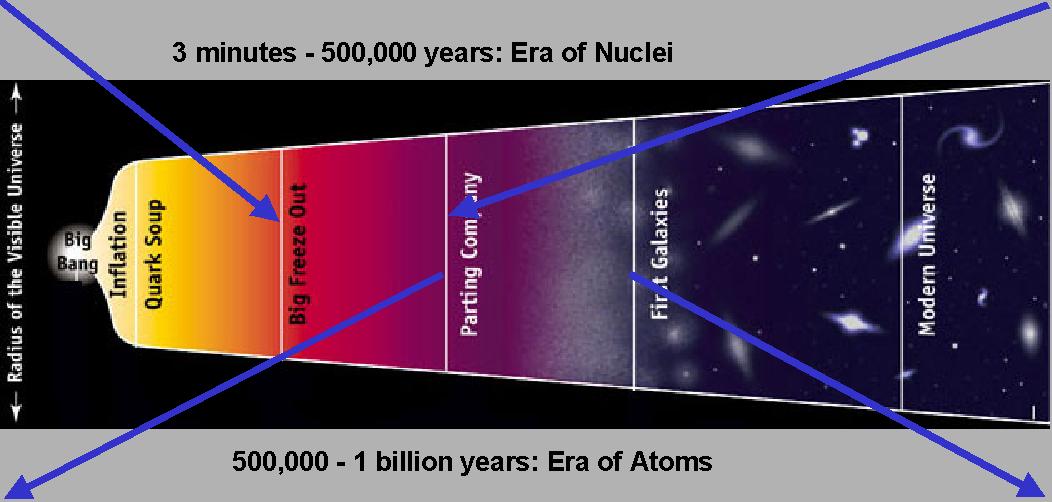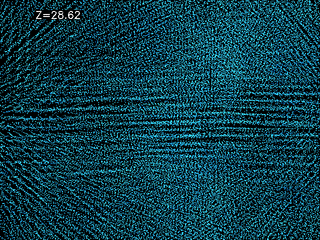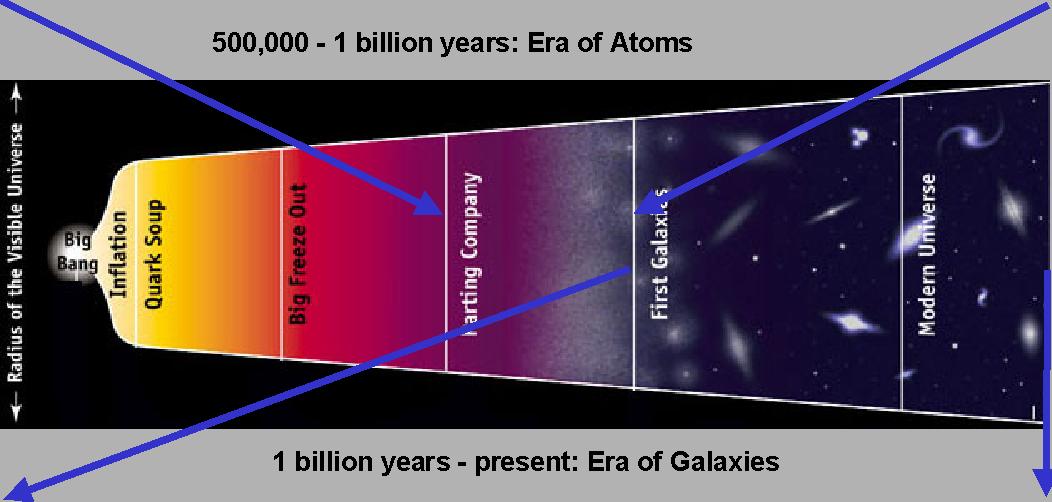
Key points: First stars, assembly of galaxies, role of dark matter in galaxy growth
Era of Nuclei

Era of Atoms
After recombination the concentrations could cool and attract more matter. For more, see http://background.uchicago.edu/~whu/physics/physics.html
 |
The simulation to the left shows how the matter was attracted into
large scale structures that are where galaxies eventually formed by Andrey Kravtsov (The University of Chicago) and Anatoly Klypin (New Mexico State University). Visualizations by Andrey Kravtsov. The one to the right shows more detail,
from National
Center for Supercomputer Applications (reload to restart text animations) |
 |
Exactly how this happened, we do not know -- but we know it did because we see galaxies in the Hubble Deep Field at about 1 billion years into the life of the Universe.


The Boomerang experiment launch is shown under the map obtained of the sky. http://www.nsf.gov/od/lpa/news/02/fsballoon.htm |
Depiction of the epoch of reionization from Loeb, 2006, Scientific American |
|
Click to return to syllabus |
||
| Click to return to the Era of Nuclei | hypertext |
Click to go to Recombination and Reionization |